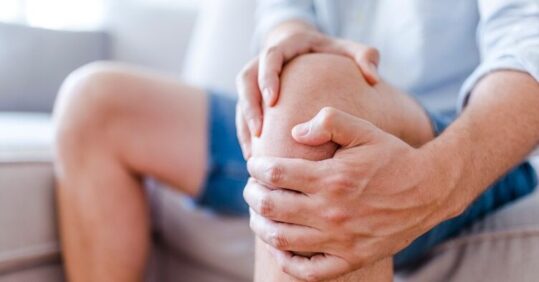Nurses should prescribe tailored exercise and weight loss for osteoarthritis

Updated NICE draft guidance has placed a greater emphasis on exercise and weight loss in patients with osteoarthritis, with use of strong painkillers not advised.
Nurses should offer tailored therapeutic exercise, such as aerobic activity or muscle strengthening, to all people with the condition as well as consider offering education or behaviour change programmes, NICE said.
As well as recommending exercise as a core treatment for people with osteoarthritis, structured information and support should be provided as well help to set weight loss goals where appropriate.
Healthcare professionals should recommend therapeutic exercise that specifically aims to prevent progression and manage symptoms and it should be tailored to the needs of the person, such as joint-site-specific exercises, the guideline committee said.
Related Article: Genetic link discovered between endometriosis and immune conditions
NICE also noted that supervised exercise was likely to have of greater benefit for people with osteoarthritis because it may increase adherence and social support.
Patients should be advised that joint pain may increase at first when they start exercising but doing regular and consistent exercise, even though it may initially cause discomfort, will be beneficial for the joints.
Clinicians should not routinely offer acupuncture, or electrotherapy, but can consider walking aids for those with lower limb osteoarthritis, the guidelines said.
Pharmacological treatments should be used at the lowest effective dose for the shortest possible time and topical NSAIDs should be the first choice for joint pain due to the condition.
Paracetamol and glucosamine should not be routinely offered, strong opioids should not be used and weak opioids only used for short-term pain relief and when all other drug treatments are contraindicated, not tolerated or not effective.
No changes have been made to previous recommendations that a diagnosis can be made without imaging in people over 45 years, who have activity-related joint pain and, have either no morning joint related stiffness or morning stiffness that lasts no longer than 30 minutes.
Dr Paul Chrisp, director for the Centre for Guidelines at NICE said:‘Osteoarthritis can cause people discomfort and prevent them from undertaking some of their normal daily activities.
‘However, there is evidence which shows muscle strengthening and aerobic exercise can have an impact on not just managing the condition, but also providing people with an improved quality of life.
Related Article: How effective are non-surgical and non-invasive treatments for lower back pain?
‘Beginning that journey can be uncomfortable for some people at first, and they should be supported and provided with enough information to help them to manage their condition over a long period of time.’
He added: ‘Whilst topical and sometimes oral NSAIDs remain an important treatment option for osteoarthritis, we have taken the decision to not recommend some painkillers, such as paracetamol and some opioids for osteoarthritis.
‘This is because new evidence has shown there was little or no benefit to people’s quality of life, pain or psychological distress and particularly in the case of strong opioids, there was evidence that they can cause harm in the longer term, including possible addiction.’
Professor Azeem Majeed, professor of primary care at Imperial College London, said the guidance was good in theory but the problem would be providing patients with access to suitable lifestyle and exercise programmes.
‘In many parts of England, these services are not in place. As well as providing the service, we also know from prior experience that it is more affluent and better educated patients who are more likely to take up these kind of interventions.
Related Article: Boost your CPD with the redesigned Nursing in Practice 365 platform
‘I also think we need to simplify clinical pathways and allow patients to refer themselves directly without requiring a referral from a GP,’ he added.
‘The use of painkillers will take some time to change because of patient expectations and previous use of medication.’

See how our symptom tool can help you make better sense of patient presentations
Click here to search a symptom




